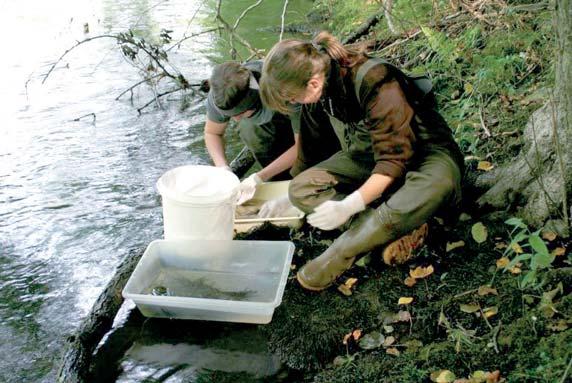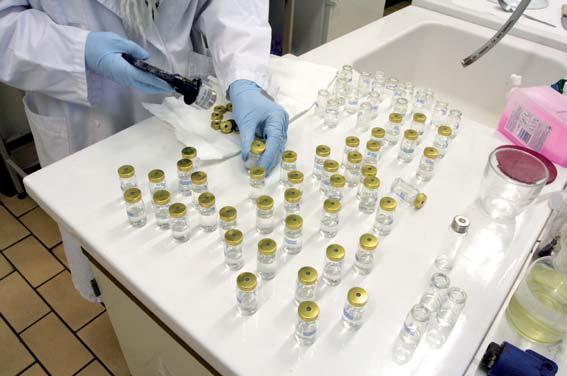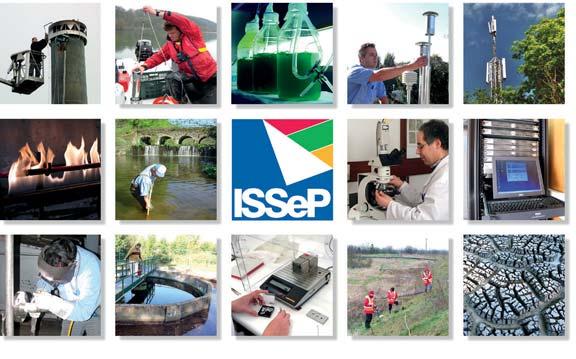
7 minute read
117
by 5rXobdlLrFp
Public Service Scientific Institute – ISSeP Real added value in the face of ever faster technological development
A true sentinel of the environment, the Walloon civil service science Institute (ISSeP) uses 3 tools to fulfil its task: a body of experts, a certain number of laboratories and specialised hardware. This metrology leader is also an active contributor to European research. More than ever ISSeP is willing to contribute to the assessment of public policies and become a support tool for political decision.
Advertisement
ISSeP is powered by the expertise of 300 agents, 3 laboratories and a range of field equipment, specialised analysis and test benches. Covering the whole of Wallonia, it organises activities around 4 major pillars: measurement and collection of data, assessment of potential and future risks, technological research and development and the reference laboratory, entrusted by the Walloon Government with the checking of skills and the means available for private operators who require official approval.
A leader in metrology Towards better protection of vulnerable or local residents exposed to plant protection products spraying
The use of phytopharmaceutical products (PPPs) requires the control of their use. On 14 June 2018, the Walloon Government adopted a decree on the application of pesticides compatible with sustainable development. The measures provided for in this text are intended, inter alia, to ensure better protection for vulnerable groups or those who live and work on the edge of agricultural parcels.
ISSeP acts on all environmental matrices: it gathers, analyses and interprets air, soil, sediment and even waste samples. It operates 30 sites measuring air quality, takes 1,800 samples and carries out 350,000 measurements in surface water per year. In addition, its reference laboratory with ISO 17025 certification has extended its ISO 17043 accreditation to join the very closed circle of six Belgian operators qualified in the organisation of comparative experiences between accredited laboratories for the “waste” and “water” areas. ISSeP is also proud of its Earth observation unit, Fire Behaviour Laboratory and laboratory dedicated to nanoparticles and nanomaterials. Not content merely to monitor pollution levels in the various environmental matrices, ISSeP is now organised around two main pillars: measurement of the environment and the production of data on the one hand and risk management on the other hand. In so doing, the Institute places itself in a position to assess public policies by interpreting the data generated by longitudinal studies. In order to obtain factual data, the Public Service of Wallonia financed a project called PROPULPPP to determine the exposure of populations to plant protection product sprays in Wallonia and to verify the proper functioning of protection measures intended to limit this exposure. This project, carried out in 2018, was coordinated by ISSeP in partnership with the Walloon Center for Agricultural Research (CRA-W) and the Phytopharmaceutical Laboratory of Gembloux Agro-Bio Tech (ULiège). The study consisted of four experimental components: the measurement of the evolution of the PPP content in the air at the edge of the field (between 0 and 50 m) at different times (2h to 48h after the application) at an experimental site; in-depth analysis of sediment drift at an experimental site; measurement of the longer-range and longer term exposure of the application (> 100 m); and contamination measurements in specific sites bordering fields (school courtyards, indoor classes and private gardens). With this in mind, ISSeP used two predictive models: the EFSA model for the authorization of active substances and its own model for assessing the risks generated by these molecules. Benedicte Heindrichs, general manager © ISSeP
© ISSeP
Specifically, researchers invested sprayed fields during the cropping season from April to September 2019 and collected factual data to verify pollutant deposits. Result: the technical means for the protection of populations work but it is possible to go further. In fact, the pollutants remain very active, even at smaller doses and at a distance from the spray source. Moreover, phytosanitary products are striking because of their omnipresence and diversity, with the impact on health that can easily be imagined. As proof, 19 pollutants banned in Belgium for more than 10 years have been identified. Evidence, if need be, of their long-term persistence. ISSeP therefore recommended reducing exposure to these products by avoiding spraying within 10 m of the living areas. Which, more broadly, raises the question of their use.
The first biomonitoring in Wallonia
In parallel, ISSeP is overseeing a robust study at the regional level. It involves analyzing certain molecules in 1,000 people representative of the population in order to answer this question: will a child born in 2020 be more exposed to pesticides than if he is born in 2025?
Impregnation of the population will therefore be measured at time 0 (2020) and then monitored annually over the long term in order to collect factual data and measure the impact of regulatory measures on the health of the Walloons. Recruitment is taking place in maternity, primary and secondary schools, but also among young adults in social advancement schools. The first results are expected in 2020.
Collaborative science, a major lever of action for ISSeP
ISSeP has acquired recognized expertise in the development of field science with citizens on the basis of a proven methodology. Projects such as EXTRACAR (development of techniques to evaluate atmospheric concentrations of black carbon, a pollutant emitted jointly with PMx by any incomplete combustion process) and OIE (Outdoor and Indoor Exposure, to precisely identify air pollution due to traffic in ambient air and indoor air) used cyclists who were transformed into data collection vectors or measurement units by measuring their personal exposure.
Other projects have been conducted to evaluate the risks of chemical molecules on health. EXPOPESTEN (population exposure to environmental pesticides) measured pesticide molecules on target audiences from hair, urine and blood samples. It also served to raise public awareness of the use of PPPs. The results were all the more relevant as they were coupled with a questionnaire on the food habits and the environment of the people analyzed.
For its part, the SANISOL project focused on the exposure of gardeners working in the collective gardens of Wallonia. In fact, there is a lack of knowledge of the quality of cultivated soils, often polluted by old industrial activities. This question is crucial at the time of ecological transition and the return to grace of short circuits. The challenge is to help gardeners to identify the quality of soils and to choose, where appropriate, leafy vegetables or

© ISSeP © ISSeP

root vegetables to avoid the transfer of pollutants into the body. In addition, a series of questions will be made available to gardeners via a web interface to check the level of soil pollution. And if the lights are red an analysis will be proposed for a small fee. Already, the study of a collective garden in Liège has shown that the soil is polluted and that the vegetables have transmitted their contaminants to the gardeners. It is therefore essential for ISSeP to rely on active environmentalists to collect data, improve our knowledge of the environment and contribute to the definition of orientations for public policies.
ISSeP is also part of two projects on indoor air quality - a new field of application that complements its expertise on ambient air. AIR-ECOLE plans to install in 20 schools 500 passive microsensors, calibrated to the scientific standards in force, in order to create a new network of measurements on the various pollutants involved. It is also about making teachers and pupils aware of the right actions when the limits are exceeded.
And that's not all: ISSeP has installed NOx tube microsensors in various Walloon municipalities in order to carry out a fine mapping of NOx concentration in the region. Once again these passive sensors were installed in specific places (windows, gardens …). Participating citizens are then responsible for bringing sensors back in due time and according to a specific procedure.
These different collaborative science projects present four capital gains for ISSeP: they allow it to access a network of unexplored data that can not be exploited because of a lack of staff; they offer the population a better apprehension of its immediate environment; they allow monitoring on a finer spatial scale thanks to the joint use of sensors and modeling; finally, they refine measures of human exposure to various pollutants. It remains to ensure the reliability of the data and their correct interpretation.
Today ISSeP strives to demonstrate its added value in the face of ever faster technological development. It will also continue to use the ability of citizens to use technological tools to capture data and use it for the benefit of all.
ISSeP Liège Headquarters Rue Chéra, 200 - B-4000 Liège Tel.: +32 (0)4 229 83 11 Fax: +32 (0)4 252 46 65 Email: direction@issep.be http://www.issep.be










